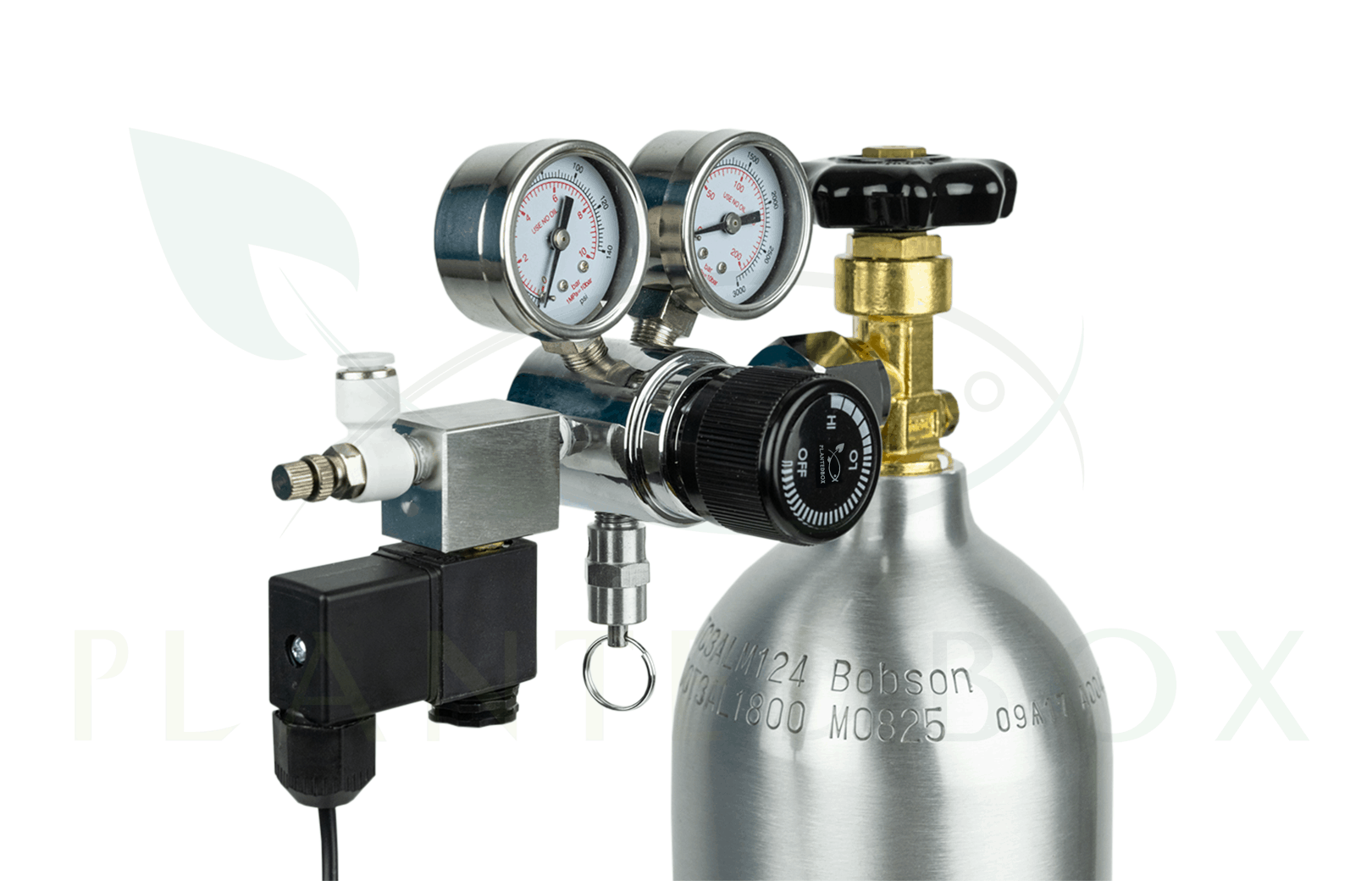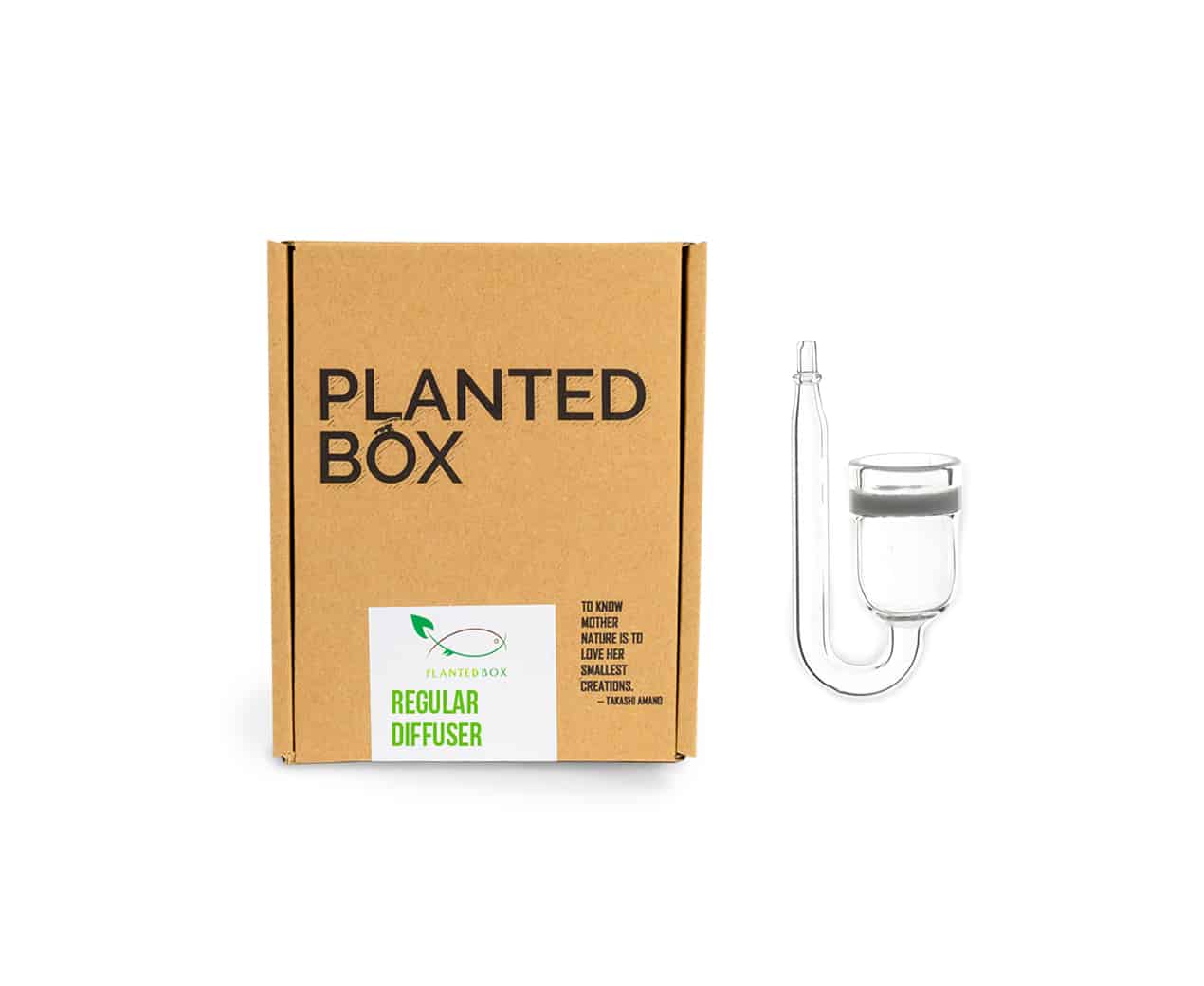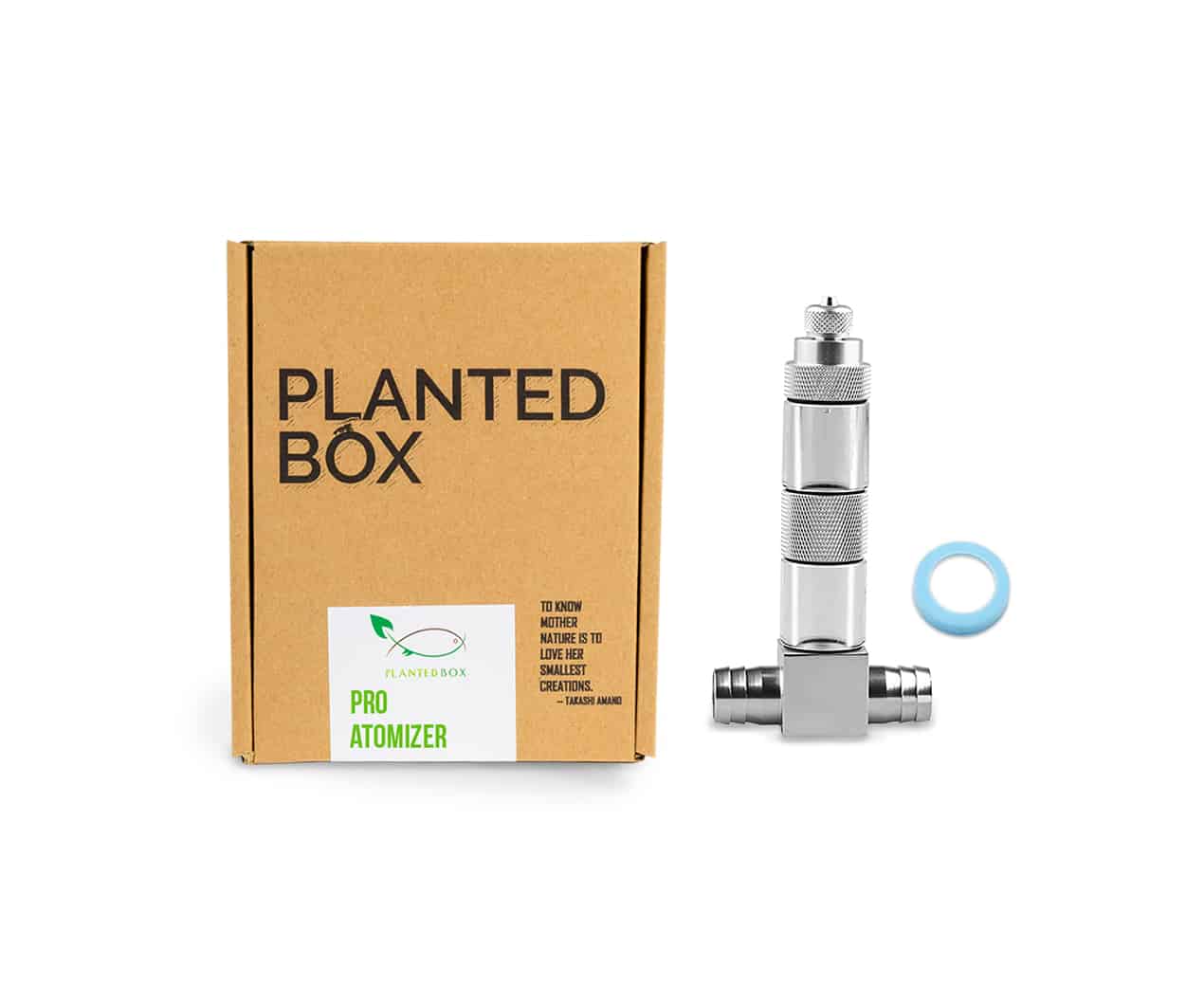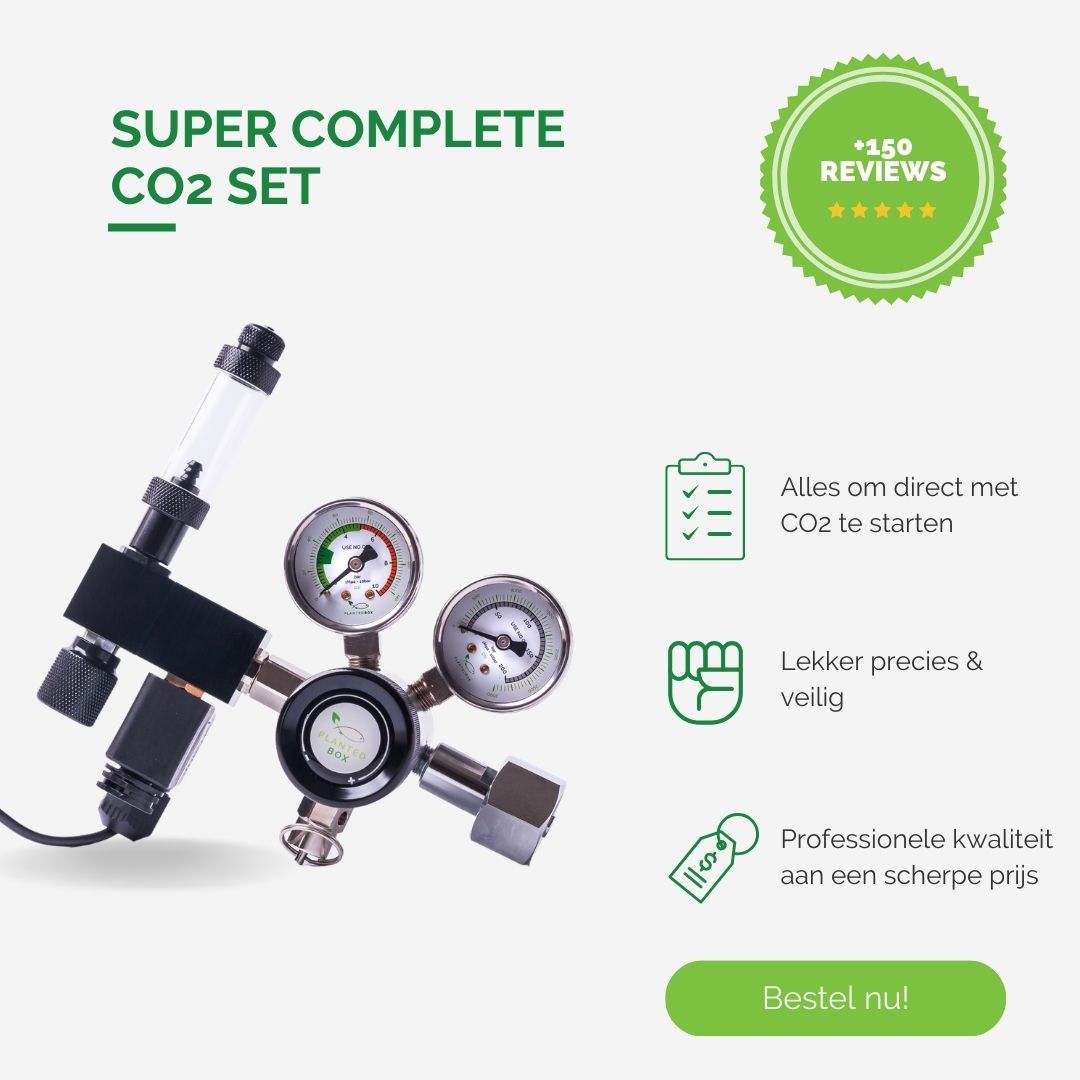Have you seen them too? Those gorgeous tanks full of lush plants, grassy carpets, bright red colors… What’s their secret?
Good CO2. Your tank lives or dies by the amount of CO2 in your aquarium for your plants. But adding CO2 is tricky.
You can’t really see it, you don’t know exactly how much you’re adding… Luckily, a solid CO2 system aquarium setup can get you going in the right direction. In this post, I’ll walk you through what to look out for and which CO2 aquarium setup fits your tank size. Got questions? Feel free to send me a message!
Does your aquarium really need a CO2 system for fish tank?
Sure, you can run a tank without CO2 and still keep it healthy, but your plant choices will be more limited.
Want a lush carpet, a beautiful patch of background plants, bold colors? Then yeah, I’d definitely recommend a CO2 system for fish tank. Most of those plants need stronger lighting. More light means faster, more compact growth—but it also means more nutrients (including CO2) are needed. If your CO2 levels aren’t in sync with that brighter light, you’ll end up with thread algae and beard algae. And it’s not just algae—your plants will start showing signs of stress:
- That fresh green color fades into a dull mess
- Leaves on your aquarium plants grow all weird
- Leaves get holes or stay tiny
- Your plants stretch towards the light like crazy

Unless you’re happy with a super basic setup full of slow growers and low light, I really recommend investing in a proper CO2 system for fish tank.
What makes a good CO2 aquarium setup?
Alright, so you’re going for it—a good CO2 kit for aquarium plants. But which one is best for your tank? Not all CO2 aquarium setups are created equal. Here’s my breakdown of what’s essential and what’s just nice to have.
Must-haves
- Needle valve: this is the little knob that controls how many CO2 bubbles you’re injecting per second. Super important—you want full control over how much CO2 goes into your aquarium. Don’t skimp here—cheap needle valves make it hard to dial things in, and that’s risky!

SMC needle valves are awesome. - A CO2 regulator for fish tank: this lets you lower the pressure from the CO2 tank to the right level. The aquarium regulator screws right onto your cylinder and usually has a big knob or lever on the front.

Nice-to-haves
These parts are technically optional, but honestly—they’ll make your life a lot easier.
- Bubble counter: unless you love the idea of manually counting bubbles for fun, just get one. Depending on the model, you either screw it straight onto the needle valve or attach it to the CO2 tubing. BTW, if you’re not sure how much CO2 your aquarium needs, check this article: how much CO2 in aquarium.

A glass bubble counter fits perfectly in sleek aquascapes. - Solenoid valve: this is the solution to avoid adding CO2 at night. Plants don’t use CO2 when it’s dark, they actually make it—so no waste, no risk of gassing your fish.

- Pressure gauges (manometers): classic advice—“you can’t manage what you can’t measure.” It’s really handy to know how much CO2 is left and what your working pressure is. Two gauges = full control.
You’ll also need something to dissolve the CO2: a diffuser, reactor, atomizer, or flipper. The best one depends mostly on your tank size.
Let’s keep going!
Small tank: which CO2 aquarium setup is best?
Straight to the point: in tanks under 100 liters, you’ve got a lot of options.
- A CO2 diffuser
- An external CO2 atomizer
- A CO2 reactor
- A flipper or ladder
- …
So what’s the difference?
The CO2 diffuser
A diffuser looks great and makes super tiny CO2 bubbles (okay, depends on taste—but I love it). These bubbles drift around the tank, cling to plant leaves, and get absorbed. Since most diffusers are glass, you’ll need to clean them often. That’s a must if you want max performance and no clogs. The good news? Cleaning is quick during a water change.

Another thing: you’ll need decent water circulation or the bubbles won’t get far. Want more info about diffusers? Check out my full guide here.
The CO2 atomizer
The atomizer makes even finer bubbles than a diffuser—it’s more like a mist. That means it’s super efficient. Bonus: you hook the atomizer to the outflow of your external filter, so the mist spreads better and you don’t even see the unit.
Downside: your CO2 regulator needs to handle 2–2.5 bar pressure, and yes, it needs regular cleaning too.

The “flipper” or CO2 ladder
This one’s totally “old school”—simple and cheap. But also the least efficient. CO2 ladders make big bubbles that often just float to the surface. Wasteful!
Here’s a tip: place your flipper right in the current to help dissolve the bubbles.

Not my fave—but if it came with your kit, sure, give it a go. Eventually, you might want something better.
The CO2 reactor
The CO2 reactor is super popular—and for good reason. It’s crazy efficient. It’s a tube filled with media that you install between your filter hoses (or in the tank if you’re using my version). It dissolves CO2 so well you can barely see the bubbles.

Only catch: it usually slows your filter, so you might need a second one or a pump. And this is super important: use a CO2 regulator for fish tank with a good solenoid and precision needle valve. Since it’s so efficient, it’s easy to add too much CO2—and that’s a risk!
Large tank: which CO2 aquarium setup is best?
So for a smaller tank, almost anything works. But for a large aquarium (100+ liters)?
I recommend a CO2 reactor.
It’s efficient when set up right. Yes, it slows your filter a bit, but in a big tank that’s easy to fix with an extra pump—or maybe your filter’s already strong enough! The nice thing about a CO2 reactor is you don’t see it (it’s tucked in the cabinet) and it barely needs maintenance. That frees you up to focus on your aquascape.
Of course, a diffuser or atomizer works too (you’ll see them in tons of gorgeous Asian tanks), but you’ll need to clean them more often.
Cheap CO2 system aquarium = expensive mistake!
Yeah, I get it. You’re browsing online, you see a crazy cheap CO2 kit aquarium setup, and your credit card’s halfway out.
Let me give you one solid piece of advice: don’t skimp when it comes to your CO2 system for fish tank.

This isn’t a sales pitch—it’s aquarist-to-aquarist advice. Cheap prices seem great until the issues pop up. They’re often cutting corners on key components, and that can be risky:
- Low-budget aquarium regulator = leaks and hard to adjust
- Cheap needle valve = poor control, which means accidental CO2 overdoses that can kill your fish
- Unreliable solenoid = CO2 at night = dead fish risk
Spend a little more and get peace of mind. A quality CO2 regulator for fish tank will last you for years—and might just save your tank.
Final thoughts
A CO2 aquarium setup is a must if you want to level up your tank game—especially if you’re keeping demanding plants. Here’s why a good CO2 system for fish tank is worth it:
- Faster growth & better leaf color
- Compact growth & lovely plant carpets
- Healthier plants & fewer algae (especially thread & beard algae)
- Way more plant options
No CO2 system for aquarium? That’s okay—but your plant options will be more limited. Just keep an eye out for signs of CO2 deficiency. Thinking of upgrading? Do your homework and get a quality CO2 kit for aquarium plants with a solid needle valve and solenoid. If needed, save up a little longer—and keep your lighting a bit dimmer in the meantime.
A beautiful aquarium deserves a top-notch CO2 system for fish tank.









